You are here: Books --> Effective Onscreen Editing 4th edition --> Word 2016 Chapter 10: Automating Your Edits
Vous êtes ici : Livres --> Effective Onscreen Editing 4th edition --> Word 2016 Chapter 10: Automating Your Edits
Chapter 10: Automating Your Edits
“I have always wished that my computer would be as easy to use as my telephone. My wish has come true. I no longer know how to use my telephone.”—Bjarne Stroustrup (originator of the C++ programming language)
“The probability that a given program will conform to expectations is inversely proportional to the programmer’s confidence in his ability to do the job. When a programmer tells you ‘no problem’, you have a serious problem. No system is ever completely debugged. Attempts to debug it invariably introduce new bugs which are even harder to find.”—Brasington’s laws of programming
Software and reference links for all versions of Word
This Web page contains instructions on the following subjects:
Alternatives to Word's automatic text
Automatic text
Macro for cleanup of a document
Macro for changing author name for a blind review
Macro for copying selected text into the Find dialog box
Print a list of your automatic text entries
Recording a macro
Running a macro
Templates and Add-ins dialog box
Alternatives to Word's automatic text
If you don't want to use Word's automatic text features, or want to add a similar feature to other programs that lack this feature, the MacWorld article Enable Text Substitutions in Every App provides instructions on how to do this.
Automatic text
To access Word's "automatic text" features, select the text that you want to convert into automatic text, then open the "Tools" menu and select "AutoCorrect":

In the AutoCorrect dialog box, select the type of automatic text you want to work with. For short text, choose "AutoCorrect":
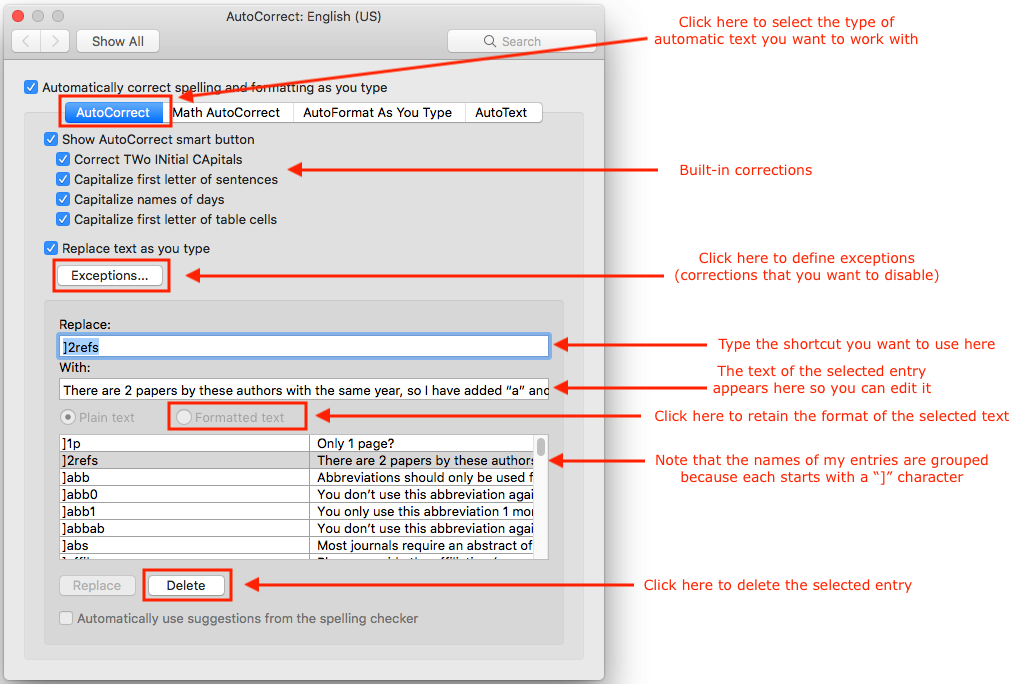
Although you can edit the text within this dialog box, this dialog box makes it hard to see what you're doing. You'll find it's easier to recreate or edit the automatic text by typing it in a document window if it's long or complicated. Then select the text and open the "AutoCorrect" dialog box. Type the old shortcut if you want to replace the old version of this text with the new version, then click the "Replace" button.
To create a longer and more complicated automatic text entry called "AutoText", select the "AutoText" tab in this dialog box:

When Word believes that you might be typing an AutoText entry, it displays a popup hint with the proposed replacement text. If it has guessed right, simply press Enter to insert that text:
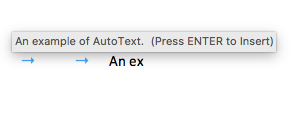
Macro for cleanup of a document
Sub Cleanup()
' Cleanup Macro
' Recorded 8/7/05 by Geoff '
Selection.Find.ClearFormatting
Selection.Find.Replacement.ClearFormatting
With Selection.Find
.Text = "^p^p"
.Replacement.Text = "^p"
.Forward = True
.Wrap = wdFind Continue
.Format = False
.MatchCase = False
.MatchWholeWord = False
.MatchWildcards = False
.MatchSoundsLike = False
.MatchAllWordForms = False
End With
Selection.Find.Execute Replace:=wdReplaceAll
End Sub
Macro for changing author name for a blind review
To change to a "blind review" identity:
Sub Blind()
Application.UserName = "Journal Reviewer"
Application.UserInitials = "JR"
End Sub
To restore your original identity:
Sub Geoff()
Application.UserName = "Geoff Hart"
Application.UserInitials = "GHT"
End Sub
Macro for copying selected text into the Find dialog box
Sub FindSelectedText()
' FindSelectedText Macro
Selection.Copy
' Define selection as variable
Dim MyFoundText$
MyFoundText$ = Selection
Selection.Find.ClearFormatting
With Selection.Find
.Text = MyFoundText$
.Replacement.Text =""
.Forward = True
.Wrap = wdFindAsk
.Format = False
.MatchCase = False
.MatchWholeWord = False
.MatchWildcards = False
.MatchSoundsLike = False
.MatchAllWordForms = False
End With
Selection.Find.Execute
End Sub
Print a list of your automatic text entries
To print a list of your automatic text entries, press Command+P to display the "Print" dialog box. Open the menu that initially displays “Copies & Pages”:
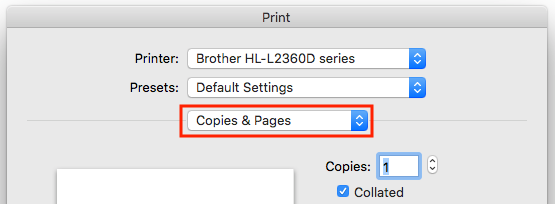
Open that menu and select “Microsoft Word”:
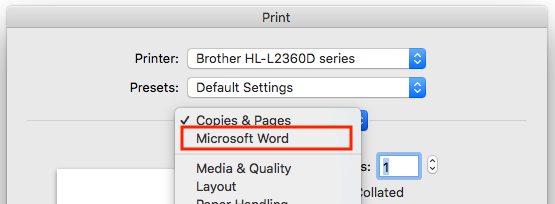
Open the “Print What” menu:
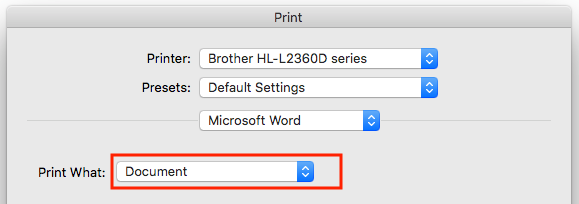
From the menu, select “AutoText entries”:
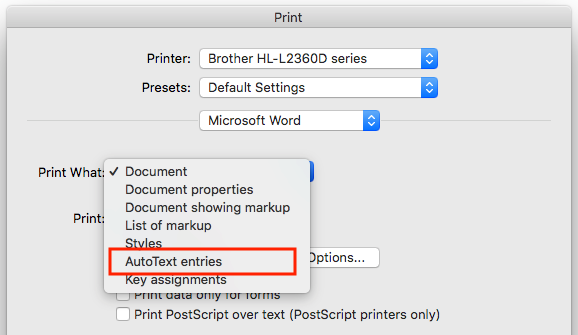
Note that this list is quite long, so consider printing it as a PDF file. This has an additional advantage: you can subsequently copy and paste the text if you need to recreate a lost or deleted automatic text entry.
Recording a macro
To start recording a macro, open the "Tools" menu, select "Macro", then select "Record macro":

Alternatively, choose the Ribbon's "View" tab, open the menu by the "Macros" icon, and choose "Record Macro":

In the "Record Macro" dialog box, name the macro, decide whether to bind it to a keyboard shorcut, and choose where you want to store it:

If you click the “Keyboard” button, Word displays the "Customize Keyboard" dialog box (see Chapter 3 for details) so you can assign a new keyboard shortcut.
To record the macro, perform the series of commands that you want to record. While you are still recording, Word changes the cursor shape to remind you:

If you need to pause the recording, select the Ribbon's "View" tab and open the menu for the "Macros" icon. Choose "Pause recording":

To resume recording after the pause, open the same menu and select "Resume Recorder":
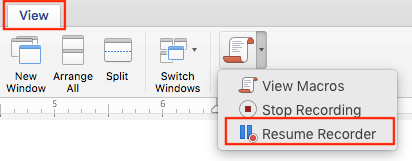
When you have finished performing the steps in the macro, open the same menu and select ""Stop recording":
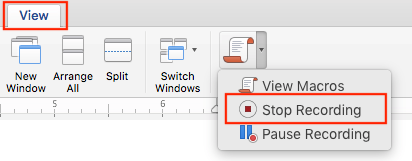
Running a macro
There are three ways to run a macro. First, if you stored it in the Quick Access Toolbar, you can display that toolbar and then click the icon. Second, if you defined a keyboard shortcut, you can
type the keyboard shortcut. Third, you can select it from the list of available macros. To do so, open the "Tools" menu, select "Macro", and then select "Macros":
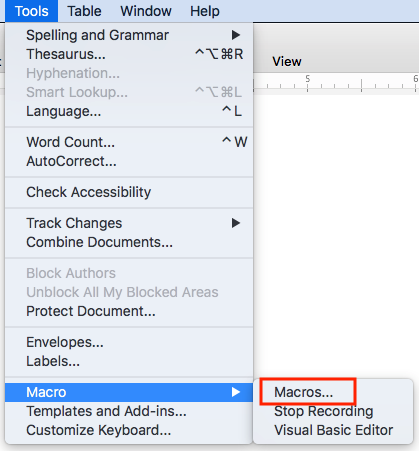
Alternatively, select the Ribbon's "View" menu, open the menu beside the "Macros" icon, then select "View Macros":
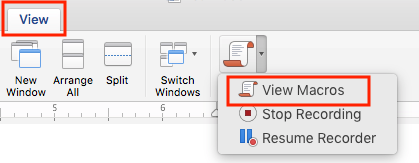
Select the desired macro in the "Macros" dialog box and click the “Run” button:

Templates and Add-ins dialog box
To gain access to the features provided by the "Templates and Add-ins" dialog box, open the "Tools" menu and select "Templates and Add-ins":
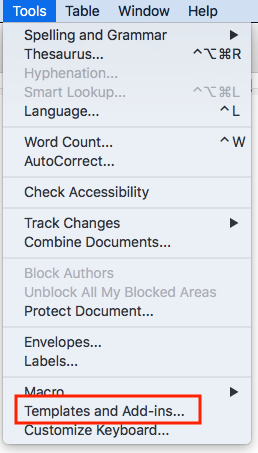
In the "Templates and Add-ins" dialog box, you can manage templates and access the Organizer:
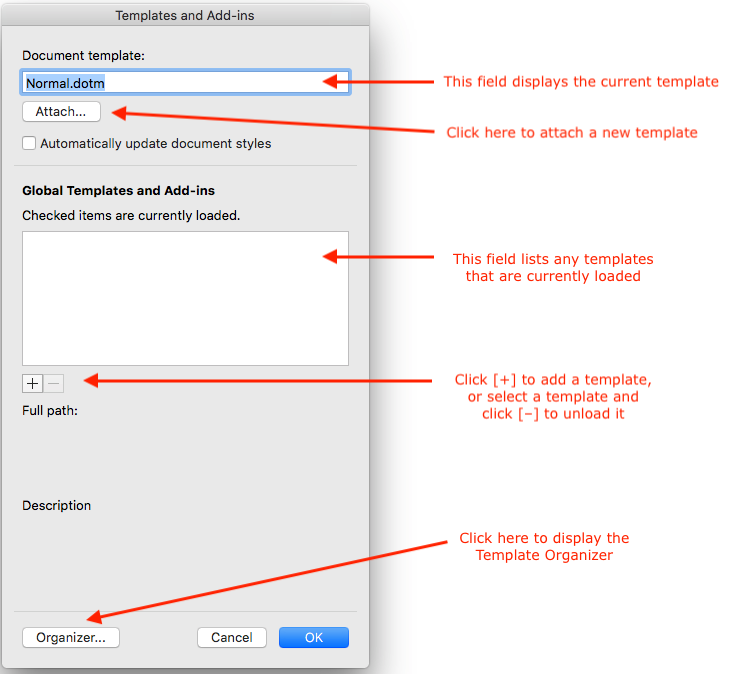
Use the "Organizer" to transfer various useful things (styles, autotext, toolbars, and macros) between documents:
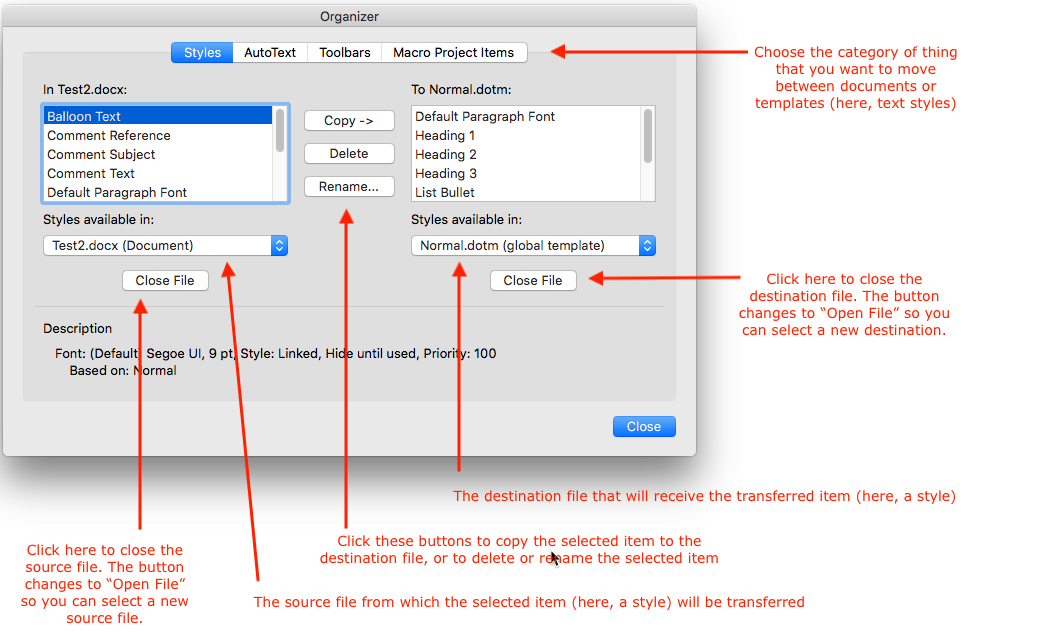
©2004–2025 Geoffrey Hart. All rights reserved.




















